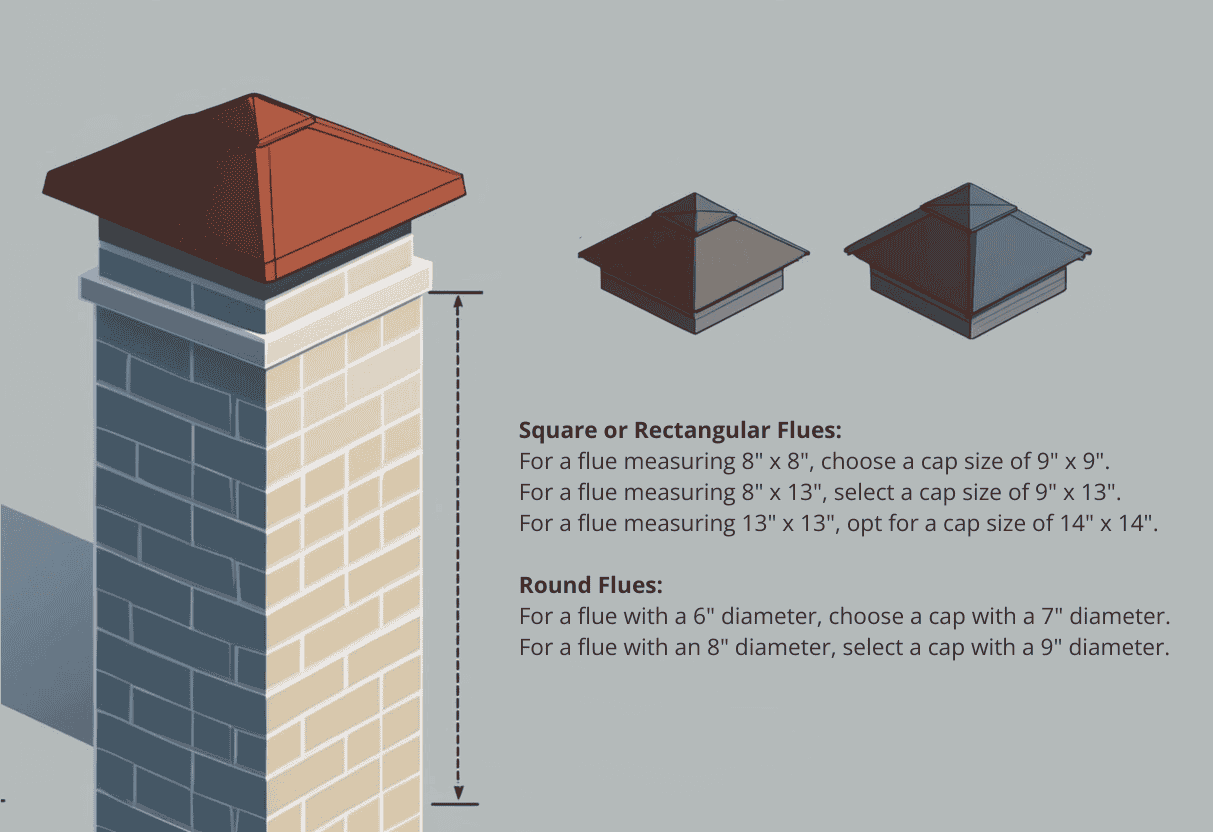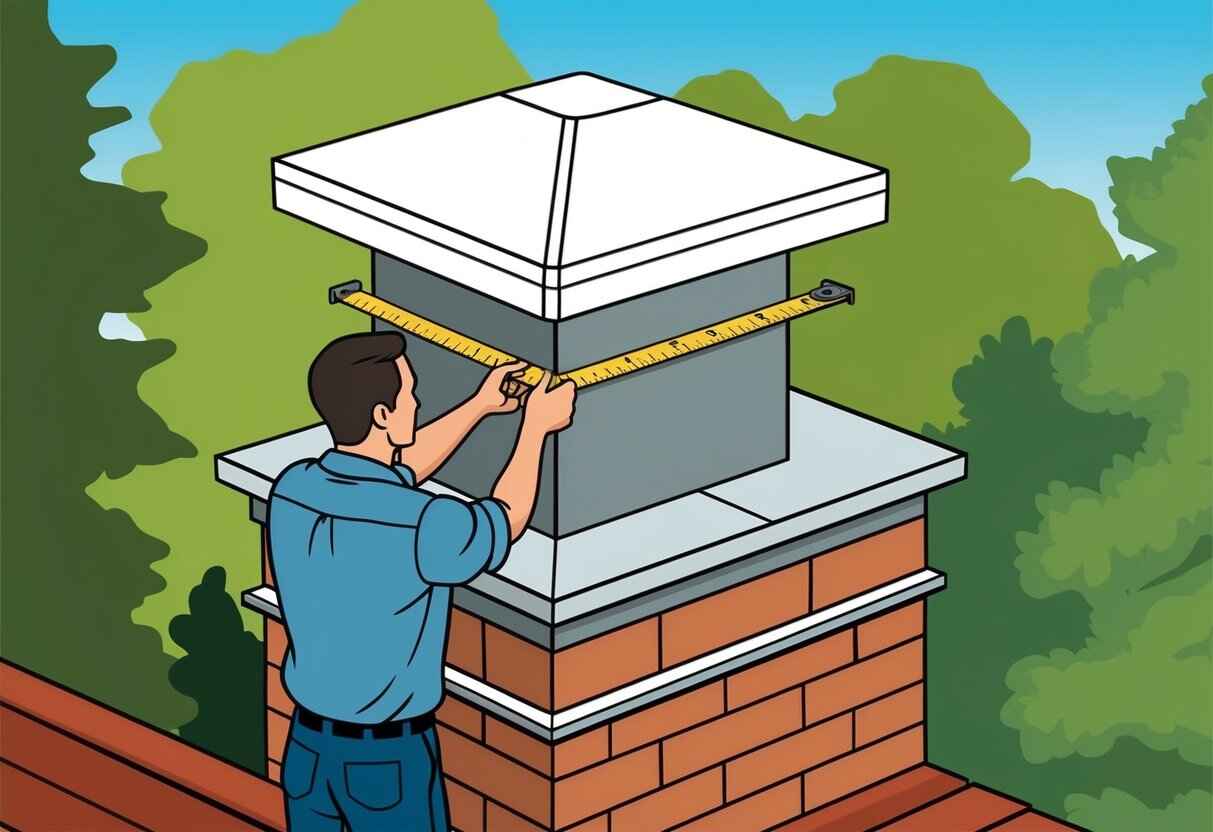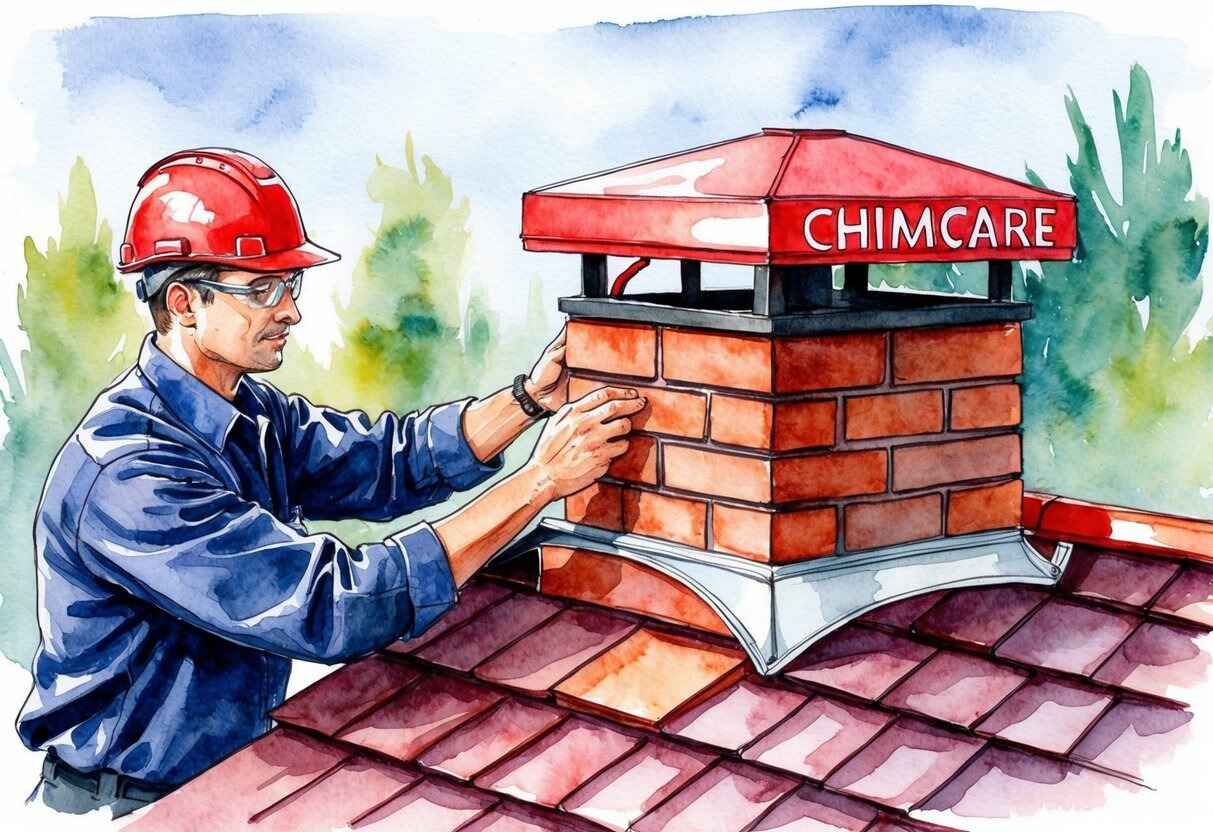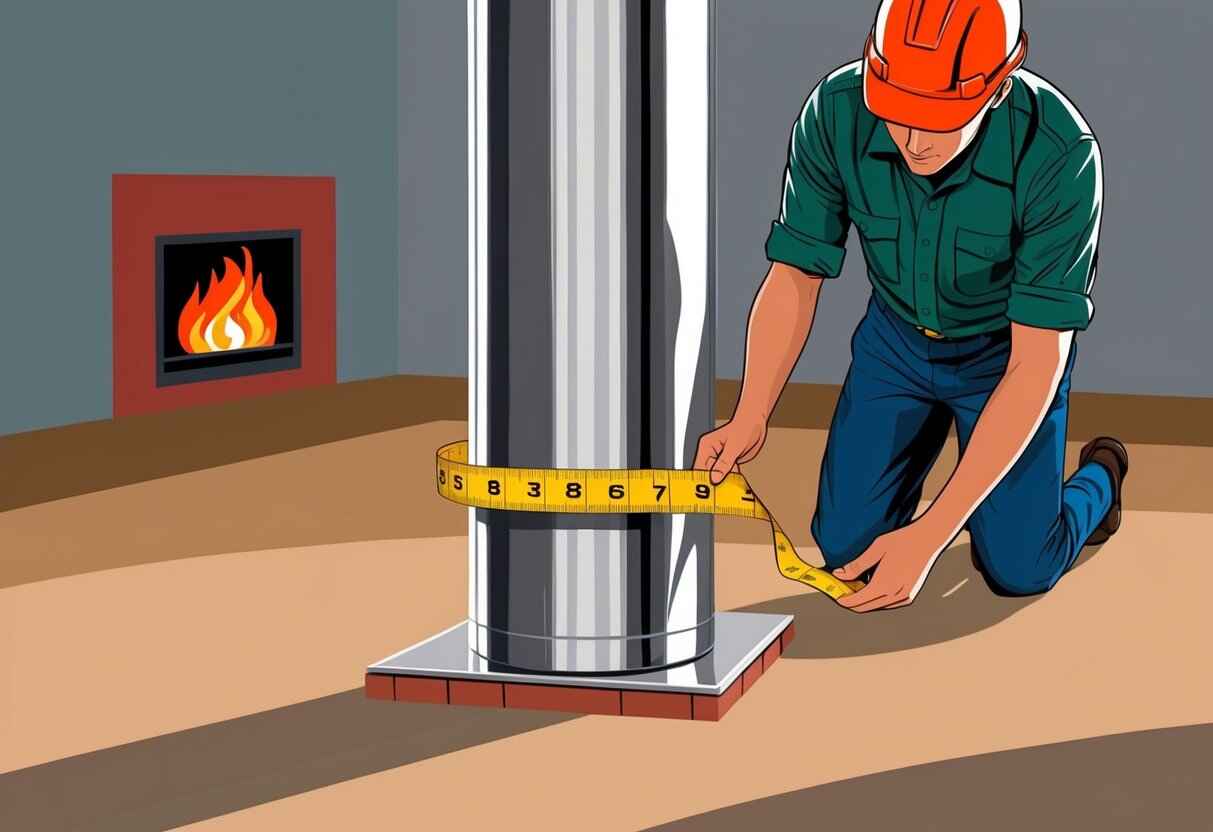How Do I Know What Size Chimney Cap to Buy A Clear Guide to Accurate Measurement – Chimcare Chimney Caps
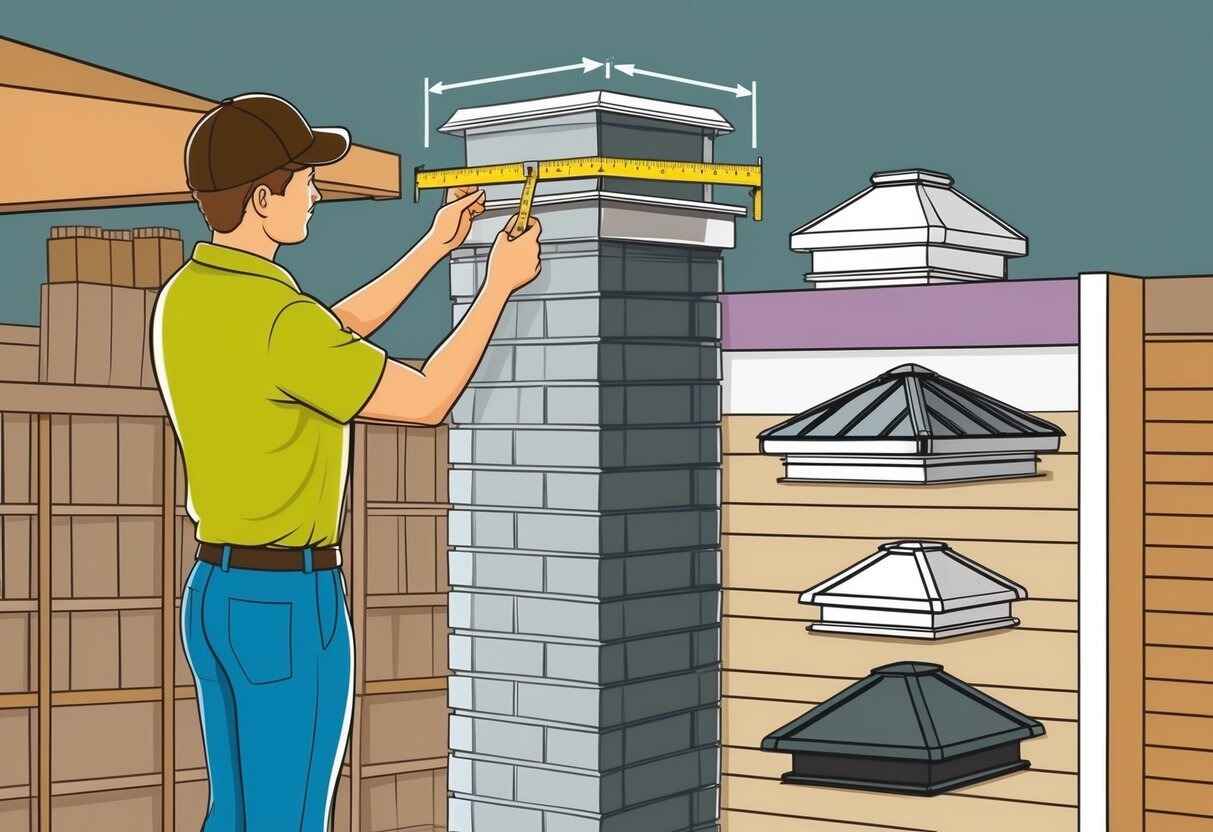
Introduction
Choosing the right chimney cap size is crucial to maintaining your chimney’s efficiency and safety. To find the correct size, measure the dimensions of your chimney flue, including its diameter and, if applicable, its length and width. This ensures proper fitting and optimal protection against weather and wildlife. Understanding these measurements allows us to effectively select a cap that fits securely on the chimney, preventing potential issues.
An inadequate chimney cap can lead to various problems, including debris accumulation and animal intrusion. With the right measurements in hand, it becomes easier to navigate the available options. Choosing a suitable cap design not only safeguards the chimney but also extends its lifespan. Our article explores the guidelines and tips for ensuring an accurate fit and sound installation.
In addition to fitting, the material and style of the chimney cap play significant roles in performance and durability. Options range from fine mesh to solid tops, each serving specific functions. We focus on helping you select a design that complements your chimney and meets your needs, discussing installation insights and maintenance strategies. Join us as we guide you through these choices for a well-protected and functioning chimney.
Key Takeaways
- Measure your chimney flue’s dimensions accurately.
- Choose a chimney cap design that suits your needs.
- Regular maintenance ensures safety and efficiency.
Understanding Chimney Cap Fundamentals
Chimney caps are essential components of a chimney system, serving both practical and protective roles. Knowing the functions, types, and components of chimney caps helps us make informed decisions about choosing the right size and type for our needs.
Function and Importance of Chimney Caps
Chimney caps protect our chimney system from weather elements such as rain, snow, and sleet. They prevent moisture from entering the flue, which can cause damage to the chimney structure and reduce its efficiency.
Chimney caps also keep animals and debris out. This obstruction can lead to dangerous blockages, increasing the risk of fires or carbon monoxide buildup. Additionally, they help to minimize downdrafts, which can cause smoke to blow back into our homes.
Types of Chimney Caps
There are several types of chimney caps designed to meet different needs.
Single-flue caps are common and fit over individual flue openings. They are usually made of stainless steel or galvanized metal.
Multi-flue caps cover multiple flues, providing protection for the whole chimney. These are ideal when flues are positioned closely together.
Custom caps can be tailored to match specific chimney sizes and styles, offering both functionality and aesthetic appeal.
Each type offers unique benefits and is available in various materials and designs.
Components of a Chimney Cap
A typical chimney cap consists of a mesh or screen that acts as a barrier against animals and debris. This feature is crucial in maintaining unobstructed airflow.
The hood or cover is placed on top, deflecting rain and snow. It’s usually crafted from durable materials like stainless steel or copper for long-lasting protection.
The stakes or fasteners secure the cap to the chimney. Proper installation is essential to withstand high winds and avoid damage.
By considering these components, we can choose a chimney cap that effectively enhances the safety and efficiency of our chimney system.
Determining the Right Size for Your Chimney Cap
Selecting the correct chimney cap size requires meticulous measurement of the flue to ensure a proper fit. We should pay attention to the dimensions and choose a cap that accommodates the specific type of flue present––whether it’s a single-flue or multi-flue design.
Measuring the Flue
Measuring the flue accurately is the foundation of choosing the right chimney cap. We should focus on obtaining precise measurements of the flue’s width and length, especially if dealing with an oval or uniquely shaped flue.
For single-flue chimneys, utilize a tape measure to assess the exterior dimensions of the flue tile, ensuring to capture edge-to-edge measurements. In circumstances where the flue is oval, pay attention to both the longest and widest sections.
Multi-flue chimneys often require a more comprehensive measurement of the entire chimney area as they may cover multiple flues. In these cases, understanding the configuration in which the flues are arranged is crucial.
Matching Cap to Flue Size
Once we have the flue dimensions, matching them with the chimney cap becomes the next step. Manufacturers typically specify the intended flue size on chimney caps. For efficient selection, compare the measurements with detailed sizing guides.
Single-flue chimney caps usually come in standardized sizes that fit common flue dimensions, such as 8″ x 8″ or 13″ x 13″. In contrast, multi-flue chimney caps need a custom approach, which may involve band-around-brick designs to cover larger areas.
Accurate matching ensures the cap will effectively protect the chimney while maintaining aesthetic appeal and functionality, guarding against intrusions such as rain, debris, or wildlife.
Selecting the Appropriate Chimney Cap Design
When deciding on the right chimney cap design, we need to consider the cap’s fit—whether single-flue or multi-flue—as well as its material. Additionally, certain special features like spark arrestors can improve both functionality and safety.
Single-flue vs Multi-flue Caps
Choosing between single-flue and multi-flue caps depends on the chimney structure. Single-flue caps are suitable for chimneys with one flue opening, while multi-flue caps cover multiple flues or the entire chimney top. This design offers additional protection against weather and debris.
For masonry chimneys, multi-flue caps can protect the mortar crown, extending its life. Whether to select a cap leg kit for installation depends on the chosen model’s requirements, ensuring a snug fit and stability.
Material Considerations
Chimney cap materials influence durability and longevity. Stainless steel caps offer excellent corrosion resistance, making them ideal for harsh weather. Copper is aesthetically pleasing and durable but more costly.
Galvanized steel is a budget-friendly option but may rust over time, requiring periodic replacement. Selecting the right material is crucial to reduce maintenance and extend the chimney’s lifespan.
Special Features to Consider
Special features can enhance a chimney cap’s performance. A spark arrestor prevents embers from escaping, reducing fire risks, especially in wildfire-prone areas. We might also consider caps with built-in dampers to improve airflow and energy efficiency.
Additional options like decorative tops can enhance visual appeal while still providing practical benefits. Considering these features ensures that our chimney cap not only protects but also complements our home’s overall design.
Installation Techniques and Tips
When installing a chimney cap, it’s crucial to execute the process with precision. This ensures both security and efficiency, helping prevent chimney fires and other potential issues.
DIY Installation Process
We begin by gathering the necessary tools: a drill, screws, a tape measure, and a ladder. Besides, safety equipment such as gloves and goggles is essential. First, measure the flue to ensure you’re fitting the right size cap. Flue mount caps are common, needing an accurate flue size for a tight fit.
Next, clean the area around the flue. Any debris can affect the installation. Position the chimney cap over the flue opening carefully. Align it properly, ensuring it sits flush.
Drill pilot holes for screws if needed. This prevents cracking in certain materials and makes installation easier. Attach the cap securely using screws, ensuring they are tight but not overly so. During this process, we must be cautious to avoid damaging the cap or the chimney structure.
Securing the Chimney Cap Properly
Securing a chimney cap properly impacts both its function and the chimney’s protection. Improper installation may lead to issues like water damage or even chimney fires. It’s essential that we pay attention to the quality of the installation.
We use rust-resistant screws or fasteners. This extends the life of the chimney cap by preventing corrosion. Double-check all attachments to make sure the cap is immovable.
We recommend conducting periodic inspections or consulting a chimney sweep to verify the cap remains secure over time. It’s important for safety and performance. Emphasizing a professional touch, especially if uncertain, helps maintain the integrity of the chimney cap installation.
Maintenance and Safety Considerations
Keeping our chimney cap in prime condition is essential not only for maintaining its functionality but also for ensuring our safety. We need to regularly clean and inspect it to prevent blockages and potential hazards such as chimney fires or downdrafts.
Regular Cleaning and Inspection
Regular cleaning and inspection of our chimney cap are vital to its longevity and effectiveness. We should inspect it at least once a year, checking for debris such as leaves, animal nests, or soot buildup that can obstruct airflow.
A chimney sweep can be a valuable resource, providing professional cleaning services and ensuring no hidden issues have been overlooked. We can use a soft brush to clean off dirt and soot, but must exercise caution on roofs.
Performing these tasks can prevent damage and prolong the chimney cap’s lifespan. If we notice any damage, such as rust or cracks, it’s crucial to replace the cap promptly to maintain its protective function.
Avoiding Chimney Fires and Downdrafts
A properly maintained chimney cap is critical in preventing chimney fires and protecting against downdrafts. Downdrafts can occur when wind reverses the chimney draft, pushing smoke back into our home. A chimney cap designed to minimize this risk is a wise investment.
By blocking downdrafts and debris, the cap also helps reduce the chance of chimney fires, which are often sparked by accumulated creosote. Regular inspection and timely cleaning can significantly reduce the risk of these hazards.
We should ensure our chimney cap fits properly and is suited to our specific chimney type. This proactive approach, combined with routine maintenance, safeguards both our home and family.
Frequently Asked Questions
Selecting the right chimney cap involves understanding the dimensions of your chimney and the specific needs of different chimney types. Here, we address common questions to guide you in choosing the appropriate cap.
How can I determine the correct dimensions of a chimney cap for my home?
To determine the proper dimensions, we should measure the outer dimensions of the chimney flue or crown. This ensures that the cap will fit securely and function properly.
What steps should I follow to measure for a chimney cap?
We recommend measuring the inside diameter of the flue for single flue chimneys. Simply use a measuring tape to capture the necessary dimensions accurately.
Are there standard sizes for brick chimney caps, and how do I find out what they are?
Yes, there are standard sizes available for brick chimney caps. To find these sizes, we need to measure the length and width of the flue tile. Knowing these measurements will assist us in selecting a compatible cap.
What is the process for measuring chimney pipe diameter to select the right cap?
For measuring chimney pipe diameter, it’s important to measure the internal diameter of the pipe. This measurement guides us in choosing a cap that will fit snugly onto the chimney pipe.
How do I choose the appropriate chimney cap for different chimney types?
Choosing the right cap depends on the chimney type. We should match the style and material of the cap to suit the specific chimney, whether it’s masonry or metal-lined.
What are the distinctions between a chimney cap and a flue cap?
A chimney cap covers the entire top of the chimney, while a flue cap fits directly into the flue opening. Understanding this helps us select the appropriate device for our chimney’s needs.

 We Ship Anywhere USA & Canada
We Ship Anywhere USA & Canada


